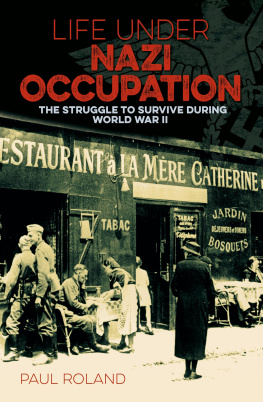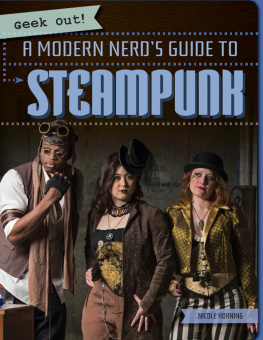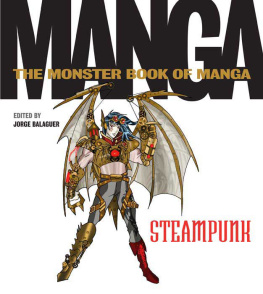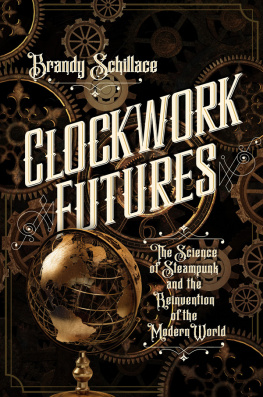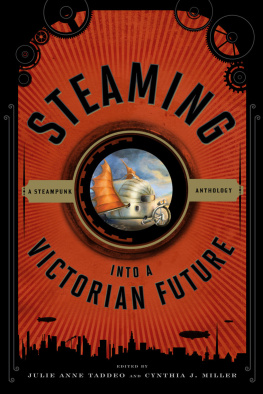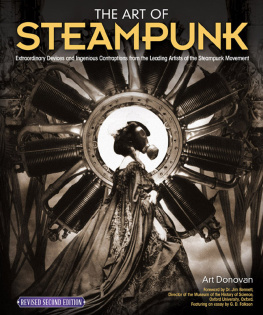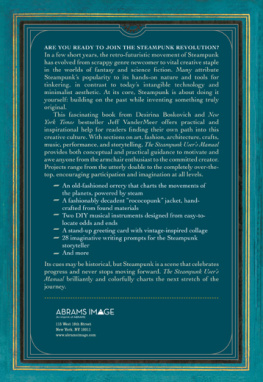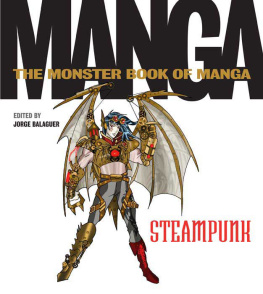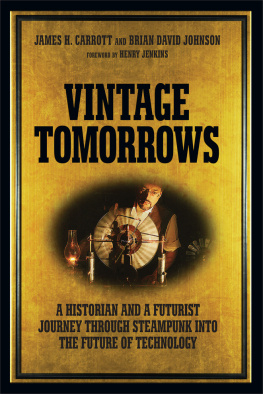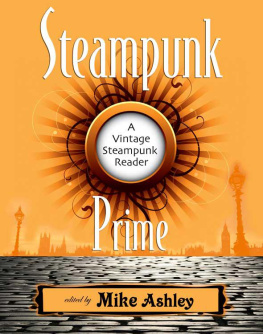What began in the late 1980s as an underground community of science fantasy aficionados with a fetish for Victoriana now pervades almost every aspect of popular culture from music and movies to comics and computer games. Steampunk is much more than a retro-futuristic fashion statement or a subgenre of science fiction.
On the surface its adherents profess a penchant for neo-Victorian fashion, fanciful clockwork accessories and have a desire to live in an alternative reality inhabited by airships and eccentric inventions. But the literature, art, music and movies of this burgeoning community offer a radical and irreverent re-imagining of society the way it might have evolved had history taken a sharp detour prior to the industrial revolution giving us a world without electricity, the infernal (sic) combustion engine and the technology that we take for granted today. The world of steampunk is the elegant gas lit world of Jules Verne and HG Wells, of Michael Moorcock and their literary antecedents for whom the digital age never dawned.
Author and musician Paul Roland traces the history of Steampunk, drawing on exclusive quotes from leading writers, artists, musicians and filmmakers in the field.

Paul Roland is a former Editor of ZigZag magazine and has been a freelance feature writer and reviewer for numerous national publications since the early 80s including Kerrang!, Sounds, Which CD?, Total Film and The Mail On Sunday. He is the author of 35 books including Cosmic Dancer The Life and Music of Marc Bolan, Dark History of the Occult, The Crimes of Jack The Ripper and The Curious Case of H.P.Lovecraft. He is also a cult indie recording artist with more than 15 albums to his credit including Danse Macabre, A Cabinet of Curiosities,Re-Animator and Bates Motel.

To my beloved father who introduced me to the worlds of HG Wells and enthused me with a love of words

ACKNOWLEDGEMENTS

The author is grateful for permission to include brief extracts from the following titles: Mortal Engines by Philip Reeve (Scholastic Childrens Books), Mechanised Masterpieces Edited by Penny Freeman (Xchyler Publishing), The Anubis Gates by Tim Powers and Argonauts of the Air by HG Wells (Gollancz), Perdido Street Station by China Miville (Pan Macmillan), Worldshaker by Richard Harland (Templar), Boneshaker by Cherie Priest (Macmillan), Space Captain Smith by Toby Frost (Myrmidon Books), Alchemy of Stone by Ekaterina Sedia (Prime), The Immersion Book of Steampunk Edited by Jones and Rafala (Immersion) and The Society of Steam by Andrew P Mayer (Pyr).
Thank you also to the artists and publishers of the following songs for permission to quote brief extracts: Abney Park, Sunday Driver, Paul Alborough (Professor Elemental) and Tom Caruana.
The remaining extracts are included under the terms of Fair Use, Copyright Act 1988.

CONTENTS

CHAPTER ONE
CHAPTER TWO
CHAPTER THREE
CHAPTER FOUR
CHAPTER FIVE
CHAPTER SIX
CHAPTER SEVEN
CHAPTER EIGHT
Introduction
THE WONDERFUL, IMPROBABLE WORLD OF STEAMPUNK

S teampunk is much more than a retro-futuristic fashion statement, or a literary subgenre of science fiction. What began in the late 1980s as just another youth cult with a fetish for Victoriana and an aversion for grungengadget, obsessive cyberpunk, has evolved into an increasingly popular alternative lifestyle, one which influences almost every aspect of pop culture from music and movies to graphic novels and computer games.
On the surface its adherents profess a penchant for neo-Victorian costumes, quirky clockwork accessories and a desire to live in a parallel reality inhabited by airships and eccentric inventions. But the literature, art, music and movies of this emergent underground community offer a radical and irreverent re-imagining of society the way it might have evolved had history taken a sharp detour prior to the industrial revolution, giving us a world without electricity, the infernal (sic) combustion engine and the technology that we take for granted today. The world of Steampunk is the elegant gaslit world of Jules Verne and HG Wells and their literary antecedents for whom the digital age never dawned.
It seems there has never been a better time to go back to the future and dress up in Victorian costumes, complete with improbable clockwork accessories. And the great thing about Steampunk is that youre never too old to join in. Victoriana is back in vogue and its permeating everything from big screen blockbusters such as Sherlock Holmes: A Game of Shadows and the small screen re-imagining of Doctor Who to cog-encrusted crafts and music performed by young chaps kitted out in pith helmets and goggles and young flibbertigibbets in tight fitting leather corsets. Dash it, there are even gentlemen rappers expounding on the delights of a refreshing cup of tea and the idiosyncrasies of the British character. The leading exponents of Steampunk are turning their backs on the twenty-first century and going back to a time of imagined elegance and adventure when airships filled the skies and Queen Victoria presided over an Empire so affluent that even she couldnt suppress a smile.
The rustle of crinoline, the chink of china tea cups and the mashup of musical styles from goth to punk (and everything in between) characterise a global movement that continues to gather momentum because it is primarily a reaction to the bland, charmless, impersonal world that mass production and consumerism have foisted upon us. By looking back to a more leisurely era which offered high quality handcrafted items and rewarded ingenuity, steampunk contraptors (artists) can assert their individuality, at least until its time to change back into their everyday clothes. They may enjoy dressing up and partying like its 1899, but behind every immaculately groomed gentlemen there lurks a frustrated explorer, adventurer, airship pirate or inventor and by his side a feisty female heroine straining to be free of her tightly laced corsets so she can assert her rights to equal everything.
While it may be perceived by outsiders as a cosplay cult, there is an underlying philosophy and value system shared by all participants which is rarely, if ever, referred to openly because to do so just wouldnt be cricket. You will see it demonstrated every time a gentleman be he aristocrat or lowly ruffian opens a door for a lady or shares his last scone with a street urchin. For good manners and consideration for others are valued by the true steampunk devotee just as highly as craftsmanship. And while it may be true that the real Victorians were not too kind to criminals, widows and orphans, locking spare wives in the attic, confining the poor to the workhouse, putting debtors in the quod and transporting convicts to the colonies, it must be said in their defence that they had impeccable manners. And that lost art is something steampunks take a particular pride in.
Next page





